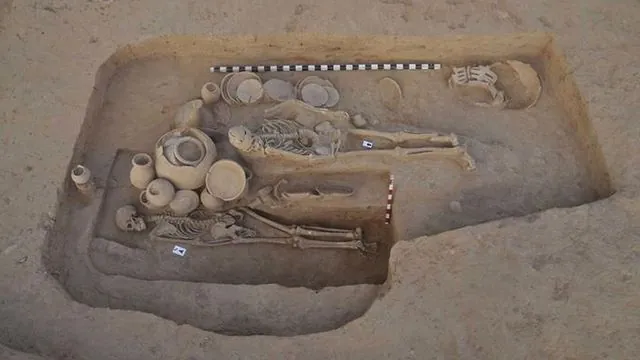
Unlocking the Secrets of Early European Adaptation Through Ancient DNA
2024-11-20
Author: Yu
Unlocking the Secrets of Early European Adaptation Through Ancient DNA
Recent groundbreaking research from a collaborative team at The University of Texas at Austin and the University of California, Los Angeles, has provided unprecedented insights into the adaptive evolution of ancient Europeans over a span of 7,000 years. Published in the prestigious journal Nature Communications , this study highlights how evolutionary changes can be traced through ancient DNA extracted from human skeletal remains.
Lead researcher Vagheesh Narasimhan, an assistant professor of integrative biology and statistics at UT Austin, emphasized the unique value of studying ancient DNA: “We’re revealing genetic signatures that have been largely erased or masked in present-day genomes.” The research dives deep into over 700 samples collected from archaeological sites that span from the Neolithic era—around 8,500 years ago—to the late Roman period approximately 1,300 years ago.
This extensive study showcases genetic adaptations related to environmental pressures that remain invisible in modern populations. The team's innovative statistical model, tailored specifically for ancient DNA data, unveils subtle signs of natural selection that are often lost over time due to genetic recombination and population mixing. As traits favorable for survival might get diluted or even vanish from the gene pool over generations, the study of ancient genomes leads to a clearer understanding of human adaptation.
By categorizing samples into four key periods—Neolithic, Bronze Age, Iron Age, and Historical—the team could observe how changes in human lifestyle, particularly the transition from hunting and gathering to farming, influenced adaptation. The research illustrates not only shifts in diet but also how living in closer quarters with domesticated animals prompted significant genetic changes.
The analysis identified 14 critical regions of the genome that showed unmistakable signs of natural selection. Notably, genes involved in the production of vitamin D and the ability to digest milk beyond infancy emerged as particularly advantageous traits, especially in less sunny climates. As researchers noted, “This ability to digest dairy was likely vital during times of crop failure and food scarcity,” underscoring the importance of these adaptations for survival.
Furthermore, the study revealed that genes associated with immune response underwent selective pressures throughout various time periods, likely as populations encountered new diseases brought on by agricultural practices and migrations. Interestingly, half of these adaptive signals were only visible in the earliest samples, suggesting either loss through genetic drift or masking due to population mixing as civilizations evolved.
This research not only illuminates how ancient Europeans adapted to environmental challenges but also underscores the significance of ancient DNA in reconstructing the human narrative. It reminds us that many traits which once played a crucial role in survival may now be concealed within the modern genetic landscape.
As humanity progresses into an increasingly complex genetic future, these findings emphasize the need to appreciate the evolutionary pathways our ancestors undertook and how they have shaped our present-day identities. This extraordinary dive into the past provides not just answers, but raises vital questions about the role of genetic heritage in our survival strategies today.




 Brasil (PT)
Brasil (PT)
 Canada (EN)
Canada (EN)
 Chile (ES)
Chile (ES)
 España (ES)
España (ES)
 France (FR)
France (FR)
 Hong Kong (EN)
Hong Kong (EN)
 Italia (IT)
Italia (IT)
 日本 (JA)
日本 (JA)
 Magyarország (HU)
Magyarország (HU)
 Norge (NO)
Norge (NO)
 Polska (PL)
Polska (PL)
 Schweiz (DE)
Schweiz (DE)
 Singapore (EN)
Singapore (EN)
 Sverige (SV)
Sverige (SV)
 Suomi (FI)
Suomi (FI)
 Türkiye (TR)
Türkiye (TR)